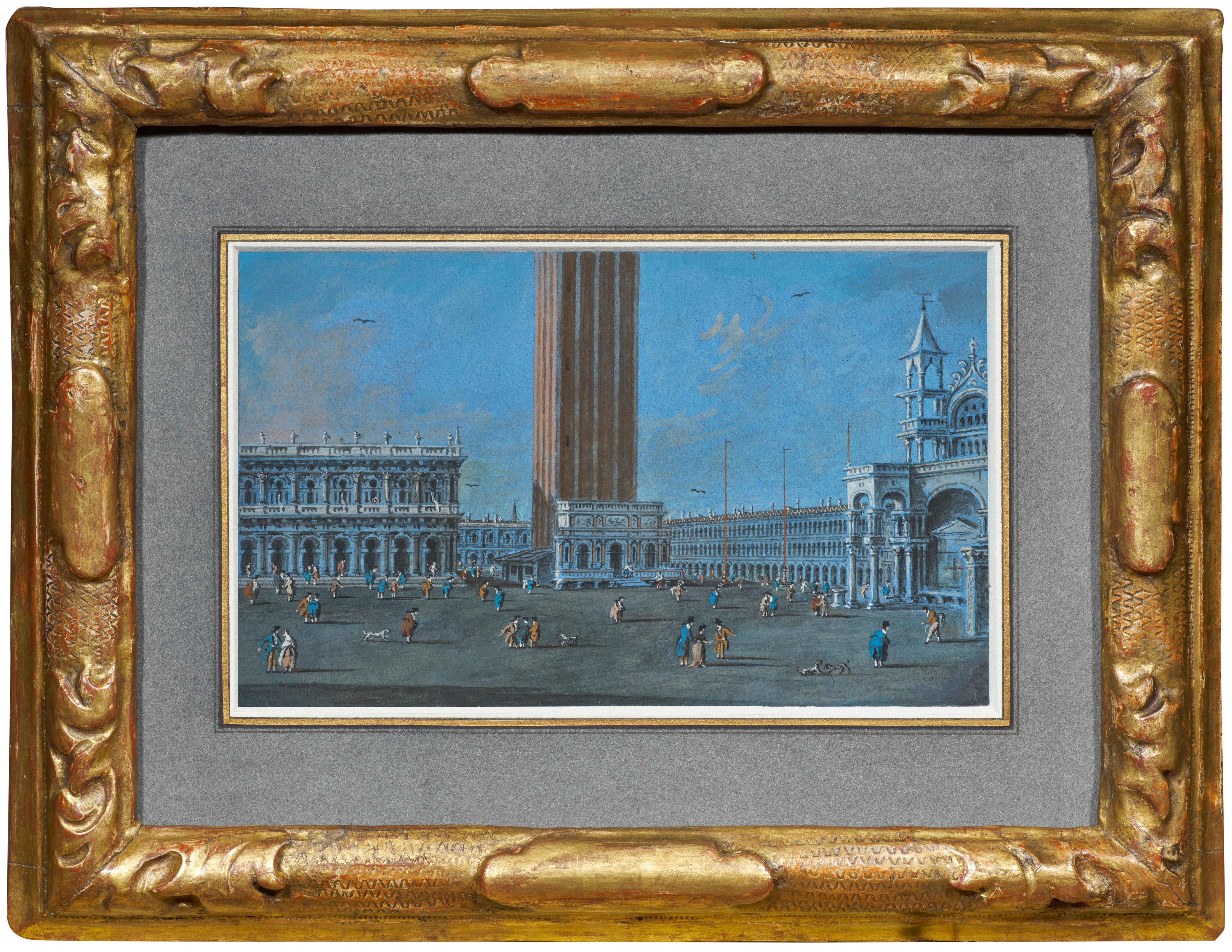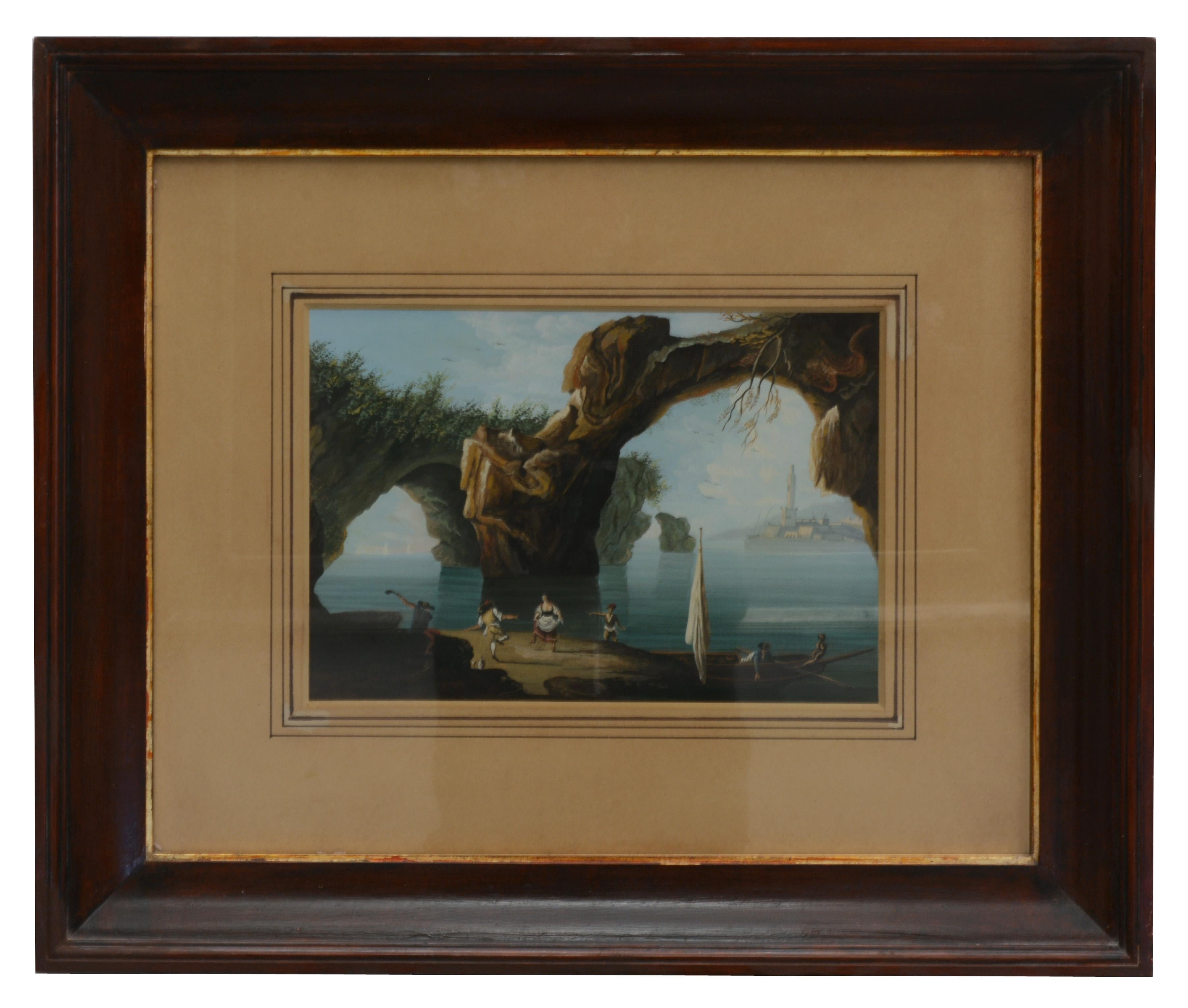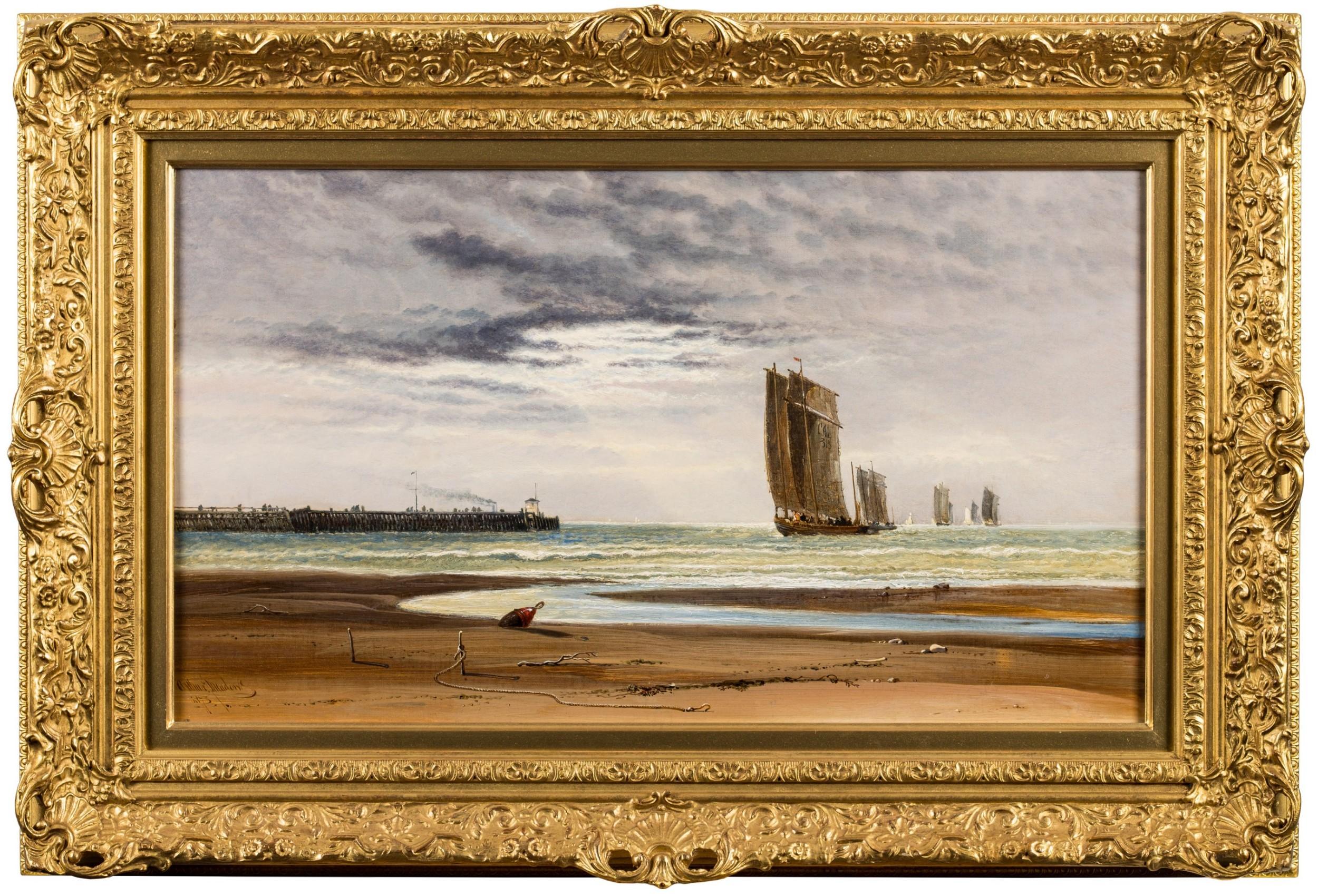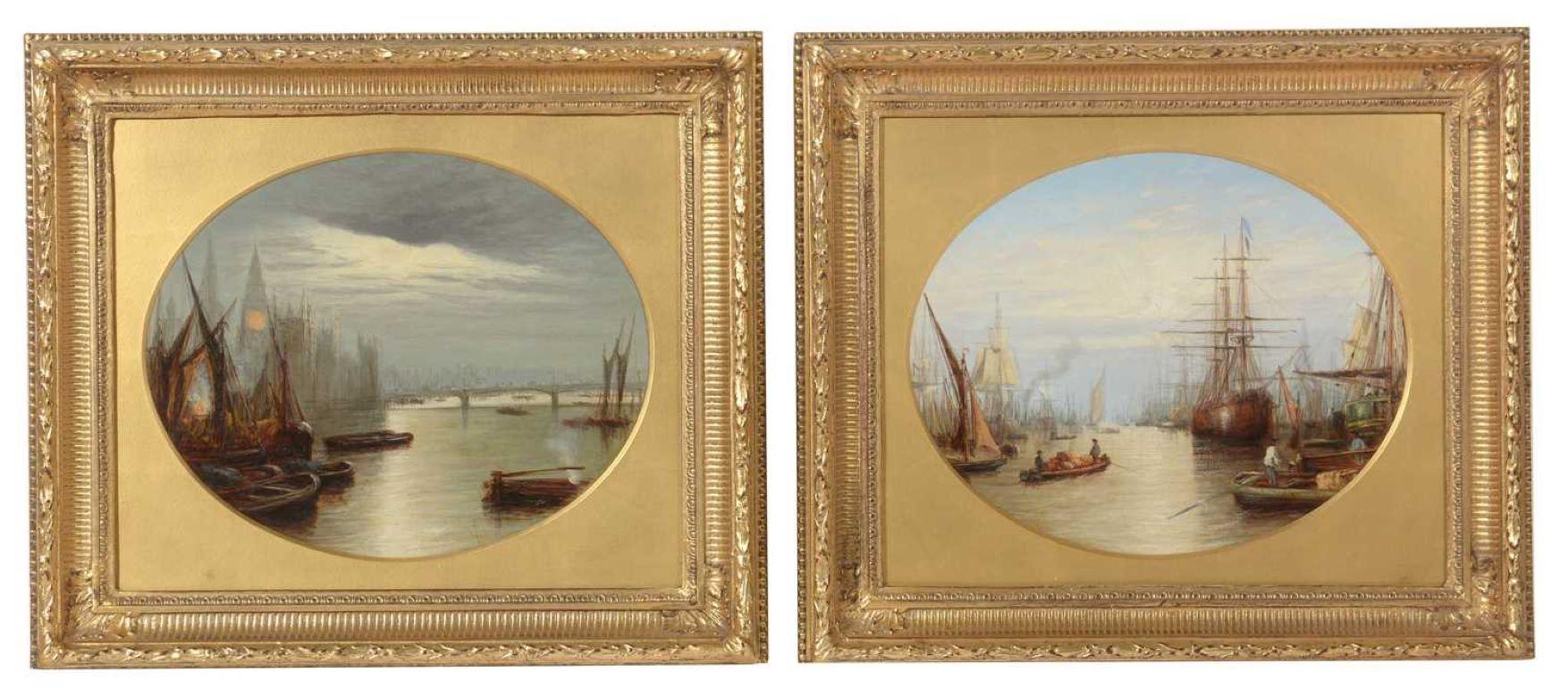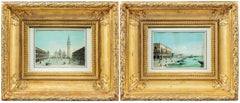Venetian Old master Paint Tempera on table Italy 16/17th Century Annunciation
View Similar Items
Want more images or videos?
Request additional images or videos from the seller
1 of 22
Venetian-Cretan Master, late 16th - early 17th centuryVenetian Old master Paint Tempera on table Italy 16/17th Century Annunciation 1550-1650
1550-1650
About the Item
- Creator:Venetian-Cretan Master, late 16th - early 17th century (1550 - 1650)
- Creation Year:1550-1650
- Dimensions:Height: 16.54 in (42 cm)Width: 18.51 in (47 cm)
- Medium:
- Movement & Style:
- Period:
- Condition:
- Gallery Location:Riva del Garda, IT
- Reference Number:1stDibs: LU98817216532
About the Seller
4.8
Platinum Seller
These expertly vetted sellers are 1stDibs' most experienced sellers and are rated highest by our customers.
Established in 2017
1stDibs seller since 2018
200 sales on 1stDibs
More From This SellerView All
- Zais Landscape Couple Paint Oil on canvas Old master 18th Century Italy VeniceBy Giuseppe Zais (Canale d'Agordo, Belluno 1709 - Treviso 1781)Located in Riva del Garda, ITGiuseppe Zais (Canale d'Agordo, Belluno 1709 - Treviso 1781) Pendant of paintings - The assault of the brigands / After the assault Oil on canvas, 108 x 42 cm. each In the frame 128...Category
18th Century Old Masters Landscape Paintings
MaterialsOil
$13,977 Sale Price45% Off - Banquet Flemish Italian Paint Oil on canvas Old master 17th Century Veronese ArtLocated in Riva del Garda, ITThe pleasures of the prodigal son Flemish painter active in Veneto in the early 17th century Oil painting on canvas Cm. 62 x 74 With antique carved and lacquered frame cm. 82 x 95 ...Category
17th Century Old Masters Paintings
MaterialsOil
- River Landscape Village Paint oil on canvas 17th CenturyLocated in Riva del Garda, ITRiver landscape with popular life scene Oil painting on canvas 62 x 98 Framed 74 x 110 cm. We present this vast and harmonious composition, where a characteristic river landscape acts as a stage for an exquisite extract of popular life, set in a small village on the edge of a lush stream. The painting, which presents characters unequivocally linked to the Flemish culture of the second half of the 17th century, shows iconographic and stylistic correspondences, in particular, with the successful production of Adrien Frans Boudewijns (1644-1711) and Pieter Bout (1658- 1719). Aside from the figure of duck hunter...Category
17th Century Old Masters Paintings
MaterialsOil, Canvas
- Paint Oil on canvas 17th Century Italy Mediterranean Landscapes Marina FlandreLocated in Riva del Garda, ITWe present this pair of fascinating coastal views, the fruit of the author's imagination, executed with an elegant descriptive taste and conceived with the scenographic sensitivity t...Category
17th Century Old Masters Paintings
MaterialsOil
- Ruins Landscape Codazzi Paint Oil on canvas Old master 18th Century Roma ItalyBy Niccolò Codazzi (Naples, 1642 - Genoa, 1693)Located in Riva del Garda, ITRoman school late 17th - early 18th century - Follower of Niccolò Codazzi (Naples, 1642 - Genoa, 1693) Pair of fantastic architectural whims with class...Category
18th Century Old Masters Landscape Paintings
MaterialsOil
$8,347 Sale Price30% Off - Landscape Crucifixion Christ Paint Oil on canvas Old master 17th CenturyBy Scipione Compagni, or Compagno (Naples, about 1624 - after 1680)Located in Riva del Garda, ITScipione Compagni, or Compagno (Naples, about 1624 - after 1680) Fantastic landscape with the Crucifixion of Christ on Mount Calvary Oil painting on canvas cm. 47 x 62 with antique frame cm. 63 x 78 cm. We present with great pleasure this rich representation, executed in the second half of the seventeenth century, whose stylistic and composition features reflect the stylistic features of the Neapolitan lesson: the warm colors, the lively chromatic range, the quick but precise brushstrokes are elements that lead us, in particular, to the hand of Scipione Compagno. It fits fully into the classic production of the Neapolitan painter, characterized by compositions filled with numerous figures, assembled with great formal elegance, where the painter re-elaborates the mannerist suggestions but in a theatrical key and consequently reaches an extremely refined Baroque vision of the narrative. The reminiscences with the painting of Filippo Angeli are evident, but above all the similarities with Domenico Gargiulo, known as Micco Spadaro, distinguished by elegant and precious chromatic accords, and with some references to Roman painting of the early seventeenth century. In the work, in fact, references to Roman and Neapolitan classicism are observed, with the bright and bright palette that we can trace back to the painter's mature works. The painting, characterized by a multitude of characters, shows the scene of the Crucifixion on Mount Calvary, where the three crosses stand out against the background illuminated by a clear light, in an almost otherworldly atmosphere of a mountainous river landscape in front of the city of Jerusalem. in the distance. Watching the dying Christ tortured we can see the three Marys, with the Virgin in red dress and blue cloak, surrounded by other women and soldiers, some of them on horseback, one of whom holds a spear with which he inflicted the wound in the side of Christ. In the foreground, again, numerous men, women and children, who attend the scene of the Crucifixion. The bright and clear colorism of the work in question is typical of Neapolitan painting...Category
17th Century Old Masters Paintings
MaterialsOil
$7,722 Sale Price20% Off
You May Also Like
- View of Piazza San Marco, a tempera signed by Giacomo Guardi (1764 - 1835)Located in PARIS, FRSigned and localized on the verso : "Vedute di parte dalla Piazza dif.a alla Loggetta e cam panil parte della Zecca ed in lontan Proc.e vechie e parte della chiesa punto preso vic...Category
Early 19th Century Old Masters Landscape Drawings and Watercolors
MaterialsTempera
- GOUACHE NAPLES MARINE - Italian landscape gouacheLocated in Napoli, ITGouache Nealopitane Marine, Italy, 2011, cm.22x33. Lacquered wooden frame. Delicious gouache made in 2011 by an unknown artist, using the method of the ancient masters of the landscape. Gouache paint is a non-permanent, water-based, opaque and opaque paint made opaque with the addition of a chalky white pigment. Invented in Europe in 500, it was initially used to carry out preliminary sketches of large oil works. It is characterized by a great ease of drafting and a lively color rendering, but it requires great skill, certainty in drawing and an extreme speed of execution, as it dries quickly and cannot be retouched. Precisely these characteristics give a particular liveliness and freshness to the works, characterized by light and opaque tones, very different from the glossy compactness of egg tempera and the transparency of the oil. Widely used in canvas paintings and miniatures. The technique was often used by landscape painters, such as Xavier Della Gatta, Pietro Fabris, Alessandro d'Anna...Category
2010s Old Masters Landscape Paintings
MaterialsTempera, Wood Panel
- Carlo Grubacs(Venetian master)- Pair of 19th century Venice landscape paintingsBy Carlo GrubacsLocated in Varmo, ITCarlo Grubacs (Perasto 1801 - Venice 1870) - Venice, pair of views of Piazza S. Marco and the Basin towards the Riva degli Schiavoni. 11 x 16 cm without frame, 29.5 x 34.5 cm with f...Category
Mid-19th Century Old Masters Landscape Paintings
MaterialsTempera, Paper
$5,241 Sale Price20% OffFree Shipping - Carlo Grubacs(Venetian master)- Pair of 19th century Venice landscape paintingsBy Carlo GrubacsLocated in Varmo, ITCarlo Grubacs (Perasto 1801 - Venice 1870) - Venice, pair of views of Piazza S. Marco and the Piazzetta towards the Clock Tower. 19 x 24 cm without frame, 25 x 30 cm with frame. An...Category
Mid-19th Century Old Masters Landscape Paintings
MaterialsTempera, Paper
$4,149 Sale Price24% OffFree Shipping - Early oil depicting the Great Fire of LondonLocated in London, GBThe Great Fire of London in September 1666 was one of the greatest disasters in the city’s history. The City, with its wooden houses crowded together in narrow streets, was a natural fire risk, and predictions that London would burn down became a shocking reality. The fire began in a bakery in Pudding Lane, an area near the Thames teeming with warehouses and shops full of flammable materials, such as timber, oil, coal, pitch and turpentine. Inevitably the fire spread rapidly from this area into the City. Our painting depicts the impact of the fire on those who were caught in it and creates a very dramatic impression of what the fire was like. Closer inspection reveals a scene of chaos and panic with people running out of the gates. It shows Cripplegate in the north of the City, with St Giles without Cripplegate to its left, in flames (on the site of the present day Barbican). The painting probably represents the fire on the night of Tuesday 4 September, when four-fifths of the City was burning at once, including St Paul's Cathedral. Old St Paul’s can be seen to the right of the canvas, the medieval church with its thick stone walls, was considered a place of safety, but the building was covered in wooden scaffolding as it was in the midst of being restored by the then little known architect, Christopher Wren and caught fire. Our painting seems to depict a specific moment on the Tuesday night when the lead on St Paul’s caught fire and, as the diarist John Evelyn described: ‘the stones of Paul’s flew like grenades, the melting lead running down the streets in a stream and the very pavements glowing with the firey redness, so as no horse, nor man, was able to tread on them.’ Although the loss of life was minimal, some accounts record only sixteen perished, the magnitude of the property loss was shocking – some four hundred and thirty acres, about eighty per cent of the City proper was destroyed, including over thirteen thousand houses, eighty-nine churches, and fifty-two Guild Halls. Thousands were homeless and financially ruined. The Great Fire, and the subsequent fire of 1676, which destroyed over six hundred houses south of the Thames, changed the appearance of London forever. The one constructive outcome of the Great Fire was that the plague, which had devastated the population of London since 1665, diminished greatly, due to the mass death of the plague-carrying rats in the blaze. The fire was widely reported in eyewitness accounts, newspapers, letters and diaries. Samuel Pepys recorded climbing the steeple of Barking Church from which he viewed the destroyed City: ‘the saddest sight of desolation that I ever saw.’ There was an official enquiry into the causes of the fire, petitions to the King and Lord Mayor to rebuild, new legislation and building Acts. Naturally, the fire became a dramatic and extremely popular subject for painters and engravers. A group of works relatively closely related to the present picture have been traditionally ascribed to Jan Griffier...Category
17th Century Old Masters Landscape Paintings
MaterialsOil, Canvas
- Italian Landscape with Jack Players, a painting by Gaspard Dughet (1615 - 1675)By Gaspard DughetLocated in PARIS, FRHere Gaspard Dughet offers us an idyllic vision of the Roman countryside. The stages follow one another in a perfectly structured composition, revealing here a lake, there travellers walking along, gradually leading our eye to the blue horizon. But behind its classical composition, this landscape is particularly interesting because of three anthropomorphic details that the artist has hidden, opening the way to a radically different interpretation... 1. Gaspard Dughet, a landscape artist in the light of Poussin Gaspard Dughet was born on June 4th, 1615 in Rome where his father, of French origin, was a pastry cook. He was probably named Gaspard in honour of his godfather Baron Gaspard de Morant, who was, or may have been, his father's employer. His older sister Jeanne married the painter Nicolas Poussin (1594 - 1655) on September 1st, 1630. The young Gaspard was apprenticed with his brother-in-law at the beginning of 1631, which led his entourage to name him Gaspard Poussin. The first preserved works of the painter date from the years 1633-1634 and were painted in Poussin’s studio. Around 1635, Gaspard Dughet became emancipated and began to frequent the Bamboccianti circle. In 1636, he became friends with the painter Jean Miel (1599 - 1656), but also with Pier Francesco Mola (1612 - 1666) and Pietro da Cortona (1596 - 1669). This was also the time of his first trips throughout Italy. The painter, although of French origin, appears never to have visited France. In 1646 he settled permanently in Rome. A recognized painter with a solid book of orders, he remained faithful to landscape painting throughout his life, alternating between cabinet paintings and large decorative commissions, using both oil and fresco. Nailed to his bed by rheumatic fever at the age of 58, he died on May 25, 1675. 2. Discovering an idealized landscape Beyond a relatively dark foreground that takes us into the landscape, we discover a vast bluish horizon: a plateau surrounded by deep ravines advances to the right, overhanging an expanse of water that sparkles below. A road winds through a mountainous mass as if leading us to the fortress that crowns it; another town appears in the distance at the foot of three conical mountains. The composition is rigorous, mineral, and structured by geometric volumes. The various stages in the landscape lead one to the next attracting the eye towards the horizon located in the middle of the canvas. The general impression is that of a welcoming and serene nature. In many places the paint layer has shrunk, or become transparent, revealing the dark red preparation with which the canvas was covered and accentuating the contrasts. Human presence is limited to three jack players, leaning against a mound in the foreground. Their long garments, which may evoke Roman togas, contribute to the timelessness of the scene. Close examination of the canvas reveals two other travellers on the path winding between the rocks. Made tiny by the distance, their introduction in the middle register, typical of Dughet's art, lengthens the perspective. While it is difficult to date the work of a painter who devoted his entire life to the representation of landscapes, it is certain that this painting is a work from his later years. The trees that occupied the foreground of his youthful compositions have been relegated to the sides, a stretch of water separates us from the arid mountains counterbalanced by two trees represented on the opposite bank. The introduction of this stretch of water in the middle of the landscape betrays the influence of the Bolognese and in particular of the Dominiquin (1581 - 1641) A number of similarities with a drawing in the British Museum might suggest a date around 1656-1657, since, according to Marie-Nicole Boisclair , it has been compared with the Prado's Landscape with the Repentant Magdalene, painted at that period. 3. Three amazing anthropomorphic details While some late Renaissance landscapes offer a radical double reading, allowing one to see both a face or a human body behind the representation of a landscape, it seems interesting to us to hypothesize that Gaspard Dughet had fun here by slipping in a few details that, taken in isolation, evoke human or animal figures. We will give three examples, looking closely at a cloud, the trunk of a broken tree and the top of a cliff. The main cloud could thus evoke a Christ-like face or that of an antique god...Category
1650s Old Masters Landscape Paintings
MaterialsOil
Recently Viewed
View AllMore Ways To Browse
Archangel Painting
17th Century Flemish Table
Angel Gabriel
Virgin And Child 16th Century
Archangel Gabriel
Parquet Table Italian
Antique Byzantine Icon
Annunciation Painting 17th Century
16th Century Wood Angel
Parquet Renaissance
Archangel Icon
Byzantine Archangel
19th Century Oil Painting On Canvas
Beautiful Vintage Paintings
England Landscape
Paintings Impressionists France
French Impressionist Painting
French Impressionist Paintings
